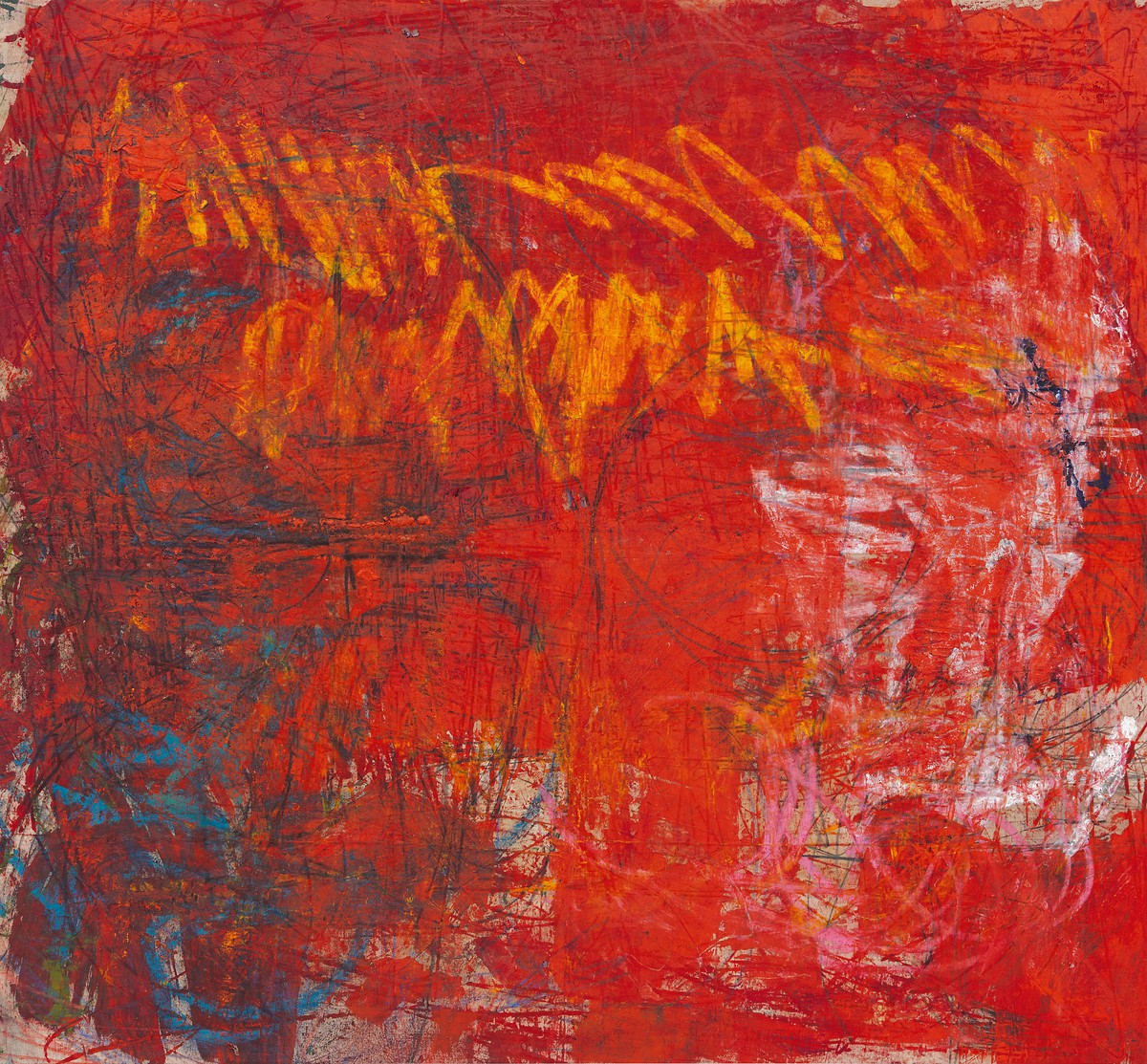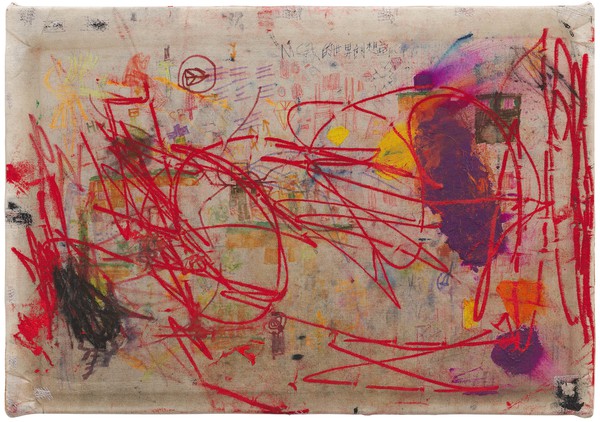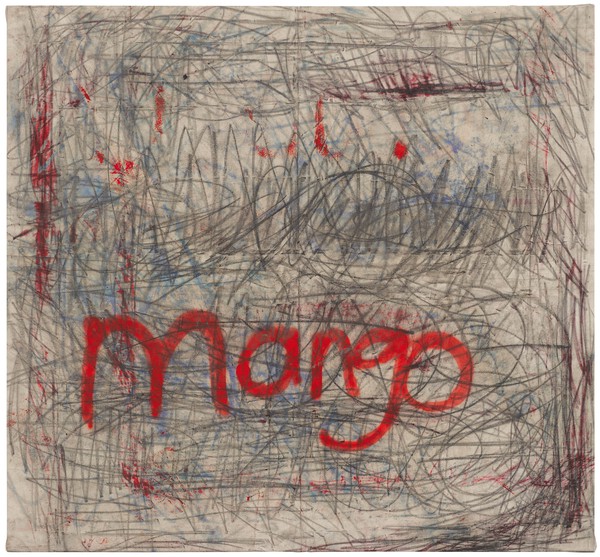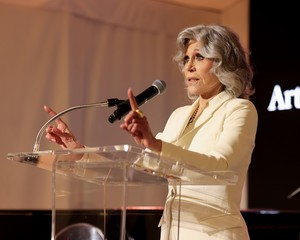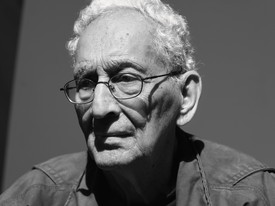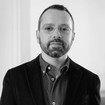
Alessandro Rabottini is an art critic and curator who lives and works between London and Milan. He has been the artistic director of MIART—International Modern and Contemporary Art Fair, Milan—since 2017. Rabottini has curated many exhibitions in European museums and institutions. Photo: Mark Blower
Alessandro RabottiniOscar, we’re here in your studio in London, and I’d like to thank you for welcoming me in this space. For the past year we’ve been working together on a forthcoming book that focuses on the project Frequencies, so I’m also really grateful for this ongoing dialogue we’re having together.
I wanted to discuss a pair of projects you’re busy with at the moment, one here in London, at Tate Modern, that will open in July, and then your solo exhibition at the Gagosian gallery in Rome, which opens in April. The London project will be a participatory installation in the Turbine Hall from July to August. Visitors of all ages will enter a space you designed in a very specific way, kind of an architecture within the architecture. They’ll be surrounded by what’s probably the most monumental installation to date of your series of paintings titled Surge. Then within this space they’ll be invited to participate in the collective production of a painting. More explicitly, they’ll be invited to draw waves or leave marks that resemble a wave. Could you tell me about your title for this show, The Flooded Garden?
Oscar MurilloYes, thank you for being here in the studio, and for bringing your energy and spirit.
The title The Flooded Garden relates to Claude Monet’s water lily paintings, referencing his garden in Giverny, the fact that he had cataracts toward the twilight of his life, and also the idea of cataracts as an antagonistic illness. So there’s an element of beauty, but a beauty with a hidden reality of the artist’s loss of sight, of darkness. I’ve been thinking about the reality and the myth of the water lily series, and for this installation I was thinking about the collective lack of seeing clearly in a tragic scenario. The idea of being “flooded” alludes to a tragic truth, a misfortune. But it also relates to the public flooding into the museum to participate, and therefore to the context of the Tate as a very, very popular institution. The water lilies, too, are popular historical works. So I’m thinking about the essence of British public policy in relation to museums—the idea that the Tate, like many other museums in the country, is free, that the public can come and participate in this part of culture. That was at the core of this project.
ARVisually the space is dominated by the blues and the blacks of the Surge paintings, and the audience will be invited to contribute to this monumental sea of marks. So there’s an open narrative about water, the image of the ocean, the tonality of the sea, the depth of it, the surface of it. What is it about water, and about marks resembling waves, that interests you in this work?
OMLike Monet’s garden, water is a network of life. The sea can be an arena of despair for people moving across it from one part of the world to another, seeking a better life, escaping a tragic present. But the sea also holds deep beauty.
I’m also thinking of the water well, the idea that you can draw water, that it doesn’t dry up, that it constantly replenishes the self. I’m inspired by this cyclical situation: for a month in this very public space, let’s do this exercise of constantly drawing water.
ARIn fact there’s this kind of cumulative economy here, because the work will present itself over five weeks, so the more we visit it, the more the work will grow in front of our eyes. It’s a little bit like Frequencies, an ongoing project that you started in 2013. The concept is to provide schools all around the world with canvases to cover the pupils’ desks, let the kids spend six months with these covered desks, and then collect whatever doodles, writings, drawings, and marks they’ve left and make them accessible to an audience. So both projects have this accumulation of signs and marks that grow collectively over time. They give you this energetic perception of things happening in front of your eyes. For The Flooded Garden, asking visitors to mark the space with the image of waves is a kind of liberating gesture, because everybody can do that. It doesn’t require any particular skill to draw that shape; it’s an instinctive mark.
It’s fascinating that you keep referring to dualities. Every time we’ve spoken about the Surge paintings, you’ve mentioned the idea that water has an obliterating force in addition to a life-giving one. So what do you mean when you mention water’s obliterating force?
OMThe oldest thing in our reality is the sea, and the wisest thing too: it has all this history and holds all this information. Water encompasses both beauty and tragedy—we see it on holiday in a gorgeous place, and in the same gorgeous place we see the death of somebody trying to migrate from one place to another. But it’s there for us all to witness and be part of in our shared experience as human beings.
ARRight, we can have endless perceptions according to our own experience of something like the sea. It can be terrifying or it can be an image of leisure. In fact, in your work, both meanings are very open.
In both The Flooded Garden and Frequencies you’re creating a structure, but the structure accepts things you cannot control as an artist. At Tate, you’ll create a conceptual and architectural structure and then you’ll welcome people to inhabit it and interfere with it. I see in your work a constant interplay between rules and spontaneity, structure and freedom. Is that something you feel?
OMYes, the two feed off each other. Structure can lead to freedom. This takes me back to paintings from 2009 or 2010, 2011, in which I explored the context of migrating from one place to the other. As a migrant, when everything in your previous life has been removed and obliterated, how do you find structure? You anchor yourself within your own cultural context, which is pleasure, which is food, which is music, which is language, and all these different familiar things. Pleasure is very much part of my personal experience. I also think pleasure is a kind of tool of resistance, to refuse to deny oneself and rather to embrace and define pleasure for oneself. This exercise of producing paintings, producing ideas: as much as I want to think historically or philosophically, I also want to leave the work open for someone else’s potential pleasure, without the burden of a singular point of view.
ARI want to stay on this idea you just expressed of something that anchors you, that grounds you. In the conversation we did for the Frequencies book, at one point I asked you how much of you as a kid is in that work, and you gave me the most straightforward, candid answer: you said, “One hundred percent of him, because when I was a kid, drawing gave me an opportunity to not drift away. It literally anchored me.” I now wonder how much going to public museums as a kid influenced The Flooded Garden. You mentioned the fact that in the United Kingdom, institutions are free, they play an important role in collective education, there’s an ideal of access. The Flooded Garden will be a participatory installation and we’ve been talking about how open the meanings have to be for everybody to feel that they can project their own experience onto them.
OMI arrived in this country as a kid, almost to the echo of Tony Blair’s speech introducing the mantra of “education, education, education, education” for his party slogan “New Labour.” I think it was late 1996 at Oxford or Cambridge, one of those prestigious universities, and it was a speech in which he expressed the idea of education as a leader of modern Britain. And this policy, to me personally, is the most radical policy. But there’s also a more negative association with it: the instrumentalization of culture. That is, funding was instrumentalized: any project, any collective of artists, any individual artist, any small organization that needed to or wanted to ask for funding from the Arts Council, had to incorporate some kind of social accountability. I think that was one of the biggest problems, because then our culture needed to have a purpose; it couldn’t be free for the sake of art.
But overall, the most radical introduction of the last forty years, I could even say the most important policy since World War II, continues to be the fact that cultural institutions are free, that a child from any walk of life, from any part of the city, can get on the bus for free and spend an entire day in a museum. That museum could be the National Portrait Gallery, it could be the National Gallery, it could be Tate Britain, Tate Modern.
ARWhat’s interesting about The Flooded Garden is when I’m there, I won’t only leave my own mark but I’ll also witness the choral, monumental version of the painting. I’m bringing this up because I want to go back to your thinking about Monet and his cataracts. Out of Monet’s experience of lack of vision, you developed the idea of the social cataract: the inability to see and understand other people’s pain. I think The Flooded Garden will actually reverse that dynamic, in the same way that when I enter the archive of Frequencies, I can’t escape these voices of kids from all over the world, each with their own individuality. I hope that as a participant in The Flooded Garden, what I will bring back home is not my own mark but the magnificent scale of other people’s marks.
OMI’m interested in the challenge of how you counter, contain, summarize the collective. With Frequencies, over time, you recognize the growing magnitude of what happens when you sew together fifty canvases from different parts of the world: South Africa, Singapore, Kenya, Japan, Brazil, Chile. There’s a sense of belonging and connection across physical roots. I’m using my own tools of painting to survive and exist in a space of complete freedom. And in that process, I’m able to recognize others, too.
ARSo let me jump from London to Rome, from summer to spring. In April you’ll open this solo exhibition at Gagosian in Rome, Marks and Whispers. The viewer will once again be immersed in a monochrome experience: in London the blue of the Surge paintings, in Rome the red of the paintings that we see here in the studio. We will travel between these two primary colors, which have a central function in your work. What can you tell me about this show in Rome, and how you had the idea of bringing these red paintings together for the first time? If I’m not wrong, some of these paintings date to over ten years ago, or even more?
OMFifteen.
ARFifteen? Up to now?
OMThe present.
ARSo it’s a comprehensive span of not just one body of work, but one specific sensibility of the work.
OMYeah, I think many aspects go into that conclusion and tie the works together. One is the idea of drawing. Very, very early on, when I learned about art as a way of life, a way to subsist—not in terms of economics but as a way to survive from a human point of view—I said, “Well, if there were no means, if there were no physical means, if there were no financial means, I could still go to the lobby of a bank and I’d be able to find a red or a black or a blue pen.” With this very basic survival tool, I’ll be able to live. What connects my works in the present to those I made when I was just beginning to flourish and evolve as an artist, in 2009, let’s say, was this romantic idea of art as communication—leaving a trace, making a mark through drawing or painting. This goes back to modernist and Renaissance ideas in art history. And for the palette of this show, red has a kind of universality. It has so many different societal meanings.
ARAbsolutely. You spoke earlier about the many meanings an individual can project on the blue of the sea, and something very similar can be said about red. It’s a vital, exciting color, but it’s also an alarming color. I project on this dominant red a kind of dramatic value. You earlier used the word “arena,” which can connote something positive, like a place of a performance or a place to debate different viewpoints. But as the exhibition is in Rome, I also think of the arena in ancient Rome: the place where the spectacle of violence, the spectacle of pain, was offered to the people. So again, a simple primary color can evoke a multitude of meanings. “Arena” also came up when you were describing the layout of the exhibition: you conceived the installation in Rome as a sort of sequence of spaces, a crescendo of works that leads us to the central arena. So I’m wondering how you scripted the way the works are installed and how the visitors can move around?
OMYes, I’m always returning to this idea of the arena. Over the years, I have incorporated seating arenas in my shows. Initially, this was a way to seat the Mateos—these papier-mâché figures that we burn in Colombia every New Year—but beyond this, the arena is a historical structure of discourse. It is the birth of some kind of democratic system or even a collective consciousness. Having a model of the gallery in my studio led me to the realization that the architecture of the space is an arena. A Telegram painting, that builds on the project of Frequencies, sits in the middle of the show. Looking at this painting from 2012, Mango [(untitled) catalyst, 2012], for example, I’m thinking about the absurdity of writing “mango” in a painting and both the importance and triviality that comes through in the context of the show. The Fields of Spirits works are like scrolls from a distant history. They were the ones that inspired the title Marks and Whispers. These strands of my practice were in the same space of my studio for so long, but they were never really brought into action together. As we were saying, the arena is where these different works, paintings, characters, ideas, gestures, energies fit in together to make a crisis unfold. There’s a compression of time. That’s how I wanted to give the show life. I’ve been making this show for fifteen years or so. It’s not really a show that can happen anywhere else. It’s not really a show that can happen again.
Oscar Murillo: Marks and Whispers, Gagosian, Via Francesco Crispi 16, Rome, April 12–June 15, 2024
Artwork © Oscar Murillo
Photos, unless otherwise noted: Tim Bowditch and Reinis Lismanis
